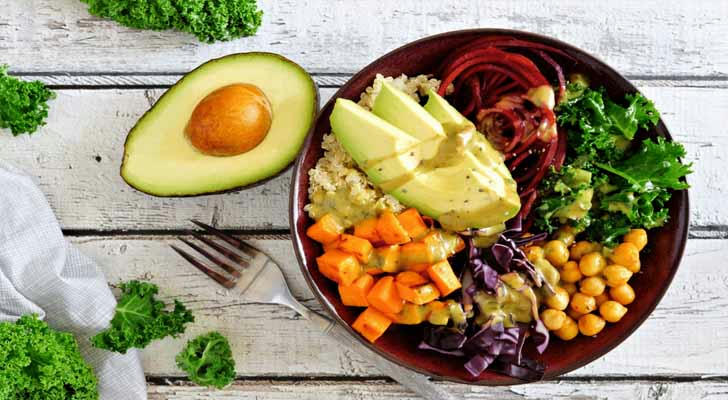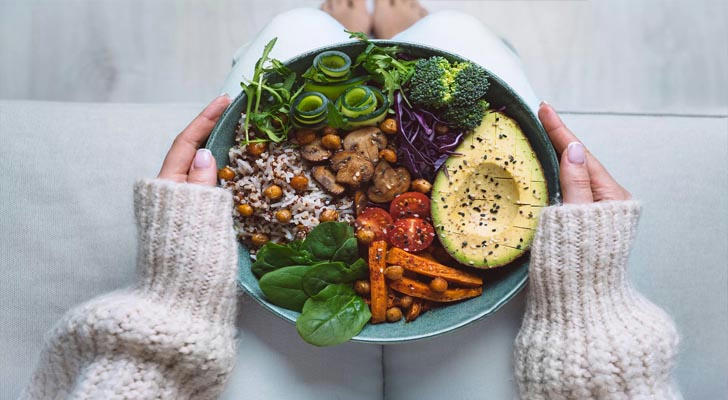The Fun and Flavorful World of Healthy Eating: Why Nutrition Matters
We’ve all heard the phrase "you are what you eat," but what if eating healthy could be just as fun as it is good for you? Imagine a plate full of vibrant colors, from juicy berries to leafy greens to golden sweet potatoes. It’s not just about eating to survive—it’s about eating to thrive! Nutrition isn’t one-size-fits-all, but understanding how different foods fuel our bodies can make a huge difference in how we feel and function every day. So let’s dive into the colorful world of healthy eating, and why it’s not just about counting calories or restricting foods, but rather about nourishing our bodies with the nutrients they need.

1. A Colorful Plate = A Healthy Body
One of the simplest ways to start eating better is to aim for a colorful plate. You’ve probably heard that eating the rainbow is key to a balanced diet—and it’s true! Each color in fruits and vegetables represents different vitamins, minerals, and antioxidants that are essential for your health.
- Red foods like tomatoes, strawberries, and bell peppers are packed with antioxidants such as lycopene, which is great for heart health and fighting inflammation.
- Orange and yellow fruits and vegetables like carrots, sweet potatoes, and oranges provide vitamin C and beta-carotene, which are good for skin health and boosting immunity.
- Green leafy vegetables like spinach, kale, and broccoli are loaded with vitamin K, iron, and calcium, supporting bone health and boosting energy levels.
- Purple and blue foods such as blueberries and eggplants are rich in flavonoids, which can support brain function and reduce oxidative stress.
By incorporating these colorful foods into your meals, you’re giving your body the nutrients it needs to function optimally. Plus, the variety of flavors makes eating healthy feel more exciting and less like a chore! 🌈🍽️
2. Fats: Not All Are Bad for You
When it comes to fats, many people shy away from them, thinking they’re the enemy of a healthy diet. But not all fats are created equal! There are good fats and bad fats, and learning the difference can help you make smarter choices.
- Good fats, found in foods like avocados, nuts, seeds, and fatty fish (like salmon), are known as unsaturated fats. These healthy fats are essential for brain health, heart health, and even keeping your skin glowing.
- Bad fats, such as trans fats and excessive amounts of saturated fats (found in processed and fried foods), can increase the risk of heart disease and raise cholesterol levels.
The key takeaway? Don’t be afraid of fats, but choose wisely. Healthy fats support your body’s functions and help keep you feeling satisfied. 🥑🐟

3. Protein: More Than Just Muscle Fuel
Protein isn’t just for bodybuilders! It’s essential for repairing tissues, building muscle, and keeping your skin, hair, and nails healthy. Plus, it helps with immune function and hormone production. While many people think of protein as something you only need after a workout, it’s actually important for everyone—whether you’re running marathons or running errands.
- Animal-based proteins like chicken, beef, eggs, and fish are considered complete proteins, meaning they contain all nine essential amino acids your body needs.
- Plant-based proteins, such as lentils, beans, quinoa, and tofu, also offer excellent protein, and many come packed with fiber and other essential nutrients.
The best part? Protein helps you feel fuller longer, so adding it to your meals can help prevent those mid-afternoon snack attacks. 🍗🌱
4. The Fiber Factor: Fuel for Your Gut
We’ve all heard that fiber is good for digestion, but did you know it has a whole bunch of other health benefits, too? Fiber helps regulate blood sugar, lowers cholesterol levels, and even reduces your risk of certain diseases.
- Soluble fiber, found in foods like oats, beans, and apples, helps lower cholesterol and stabilize blood sugar levels.
- Insoluble fiber, found in whole grains, leafy vegetables, and nuts, helps keep things moving in your digestive system and prevents constipation.
A diet rich in fiber not only supports your digestive system but also helps promote a healthy gut microbiome, which is key to overall health. So, don’t forget to load up on fiber-rich foods every day! 🍞🥗

5. Hydration: The Overlooked Key to Health
Water is often underestimated in our daily routines, but it’s crucial for everything from digestion to energy levels to skin health. In fact, about 60% of your body is made up of water, and staying hydrated is essential for maintaining that balance.
- Drinking water helps regulate body temperature, supports kidney function, and aids in nutrient absorption.
- Hydration also plays a major role in keeping your skin looking fresh and glowing—no one wants dull, dehydrated skin, right?
But hydration isn’t just about water—foods like cucumbers, watermelon, and citrus fruits are packed with water, too! So next time you reach for a drink, remember that your body needs water to stay happy and healthy. 💧🍉
6. A Real-Life Success Story: Meet Sarah
Let’s take a moment to highlight a real success story. Sarah, a 32-year-old busy professional, struggled with fatigue and frequent digestive issues for years. After speaking with a nutritionist, she decided to revamp her diet. She swapped out processed snacks for whole foods—think colorful salads, lean proteins, and plenty of fiber-rich vegetables. She also made sure to stay hydrated throughout the day.
Within just a few months, Sarah noticed a significant change. Her energy levels skyrocketed, her digestion improved, and she even started noticing clearer skin. By focusing on a well-rounded, nutrient-dense diet, she felt more vibrant and had the stamina to tackle her hectic schedule.
Sarah’s story isn’t unique—small changes to what you eat can lead to big improvements in how you feel! 🌟

7. Balance is Key: Don’t Forget to Enjoy Your Food
While nutrition is crucial, so is enjoying the food you eat. Healthy eating isn’t about perfection or deprivation—it’s about balance. No one’s asking you to give up pizza or chocolate (thank goodness!). Instead, aim for moderation and make room for the occasional treat while focusing on nourishing, whole foods the rest of the time.
Eating well doesn’t have to be a punishment; it should be a celebration of all the delicious, nutrient-packed foods that nature provides. Enjoy the process, experiment with new recipes, and savor every bite. 🍕🍫🎉
Conclusion: Nourish Your Body, Nourish Your Life
Healthy eating is about making informed choices that work for your lifestyle and your body. By focusing on whole, colorful foods, balancing macronutrients, and staying hydrated, you’re fueling yourself to feel and function at your best. And remember, it’s not just about looking good—it’s about feeling great, inside and out. So, embrace the rainbow, love the process, and celebrate the power of good food. Your body will thank you! 🌱🌟
